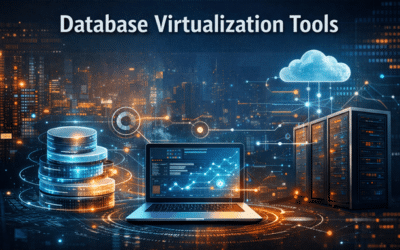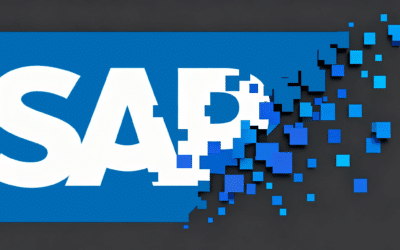Core Components of Serverless Architectures
To understand serverless architectures comprehensively, it’s essential to explore their core components, including Functions as a Service (FaaS), Backend as a Service (BaaS), and the event-driven execution model.
Functions as a Service (FaaS)
FaaS is a fundamental building block of serverless architectures, allowing developers to deploy individual functions that respond to specific events or triggers. Each function is stateless and designed to perform a discrete task, such as processing HTTP requests, handling database operations, or executing business logic.
Backend as a Service (BaaS)
In addition to FaaS, serverless architectures often leverage Backend as a Service (BaaS) offerings to offload backend responsibilities such as data storage, authentication, and third-party integrations. BaaS providers offer managed services that enable developers to integrate these functionalities into their applications without managing underlying infrastructure.
Event-driven Execution Model
The event-driven execution model forms the backbone of serverless architectures, enabling functions to be invoked in response to various events, including HTTP requests, database changes, message queue notifications, and scheduled triggers. This model fosters agility and scalability by automatically provisioning resources based on demand, without the need for manual intervention.
Benefits of Serverless Architectures
Serverless architectures offer a multitude of benefits for DevOps teams, ranging from cost efficiency and scalability to enhanced developer productivity and application resilience. Let’s explore these advantages in detail.
Cost Efficiency and Scalability
One of the most significant advantages of serverless computing is its inherent cost efficiency. With a pay-per-use billing model, organizations only pay for the resources consumed by their functions, eliminating the need for upfront infrastructure investment and reducing operational costs. Additionally, serverless architectures facilitate automatic scaling, allowing applications to seamlessly handle fluctuations in traffic and workload without manual intervention.
Simplified Operational Management
By abstracting away the complexities of infrastructure management, serverless architectures simplify operational tasks for DevOps teams. With no servers to provision or maintain, teams can focus on developing and optimizing code, rather than managing hardware or software updates. This streamlined approach not only reduces operational overhead but also accelerates time-to-market for new features and applications.
Enhanced Developer Productivity
Serverless architectures empower developers to focus on writing high-quality code and building innovative features, without being encumbered by infrastructure concerns. By abstracting away the underlying infrastructure, serverless platforms enable rapid development and deployment cycles, allowing teams to iterate quickly and respond to customer feedback in real-time. This increased agility and productivity drive innovation and competitive advantage in today’s fast-paced digital landscape.
Improved Application Resilience
The event-driven nature of serverless architectures enhances application resilience by distributing workloads across multiple functions and regions. In traditional monolithic architectures, a single point of failure can lead to widespread service disruptions. However, in serverless environments, functions are isolated and independently scalable, reducing the impact of failures and improving fault tolerance. Additionally, serverless platforms often provide built-in redundancy and failover mechanisms, further bolstering application resilience.
Challenges and Considerations
While serverless architectures offer numerous benefits, they also present unique challenges and considerations for DevOps teams. In this section, we will explore some of the key challenges associated with serverless adoption and discuss strategies for mitigating these risks.
Cold Start Issues and Latency
One of the primary challenges of serverless computing is cold start latency, which refers to the delay incurred when a function is invoked for the first time or after a period of inactivity. Cold starts can impact application performance, particularly for latency-sensitive workloads or real-time processing tasks. To mitigate this issue, DevOps teams can employ various strategies such as pre-warming functions, optimizing code for faster startup times, and leveraging provisioned concurrency features offered by serverless platforms.
Vendor Lock-in and Portability Concerns
Another concern associated with serverless architectures is vendor lock-in, wherein organizations become dependent on a specific cloud provider’s services and APIs. This dependency can limit flexibility and hinder portability, making it challenging to migrate applications between different cloud environments. To address this challenge, DevOps teams should adopt a multi-cloud strategy, leveraging abstraction layers, containerization, and open standards to minimize vendor lock-in and maintain portability across platforms.
Security and Compliance Implications
Security and compliance are paramount considerations in serverless computing, given the shared responsibility model between cloud providers and users. While cloud providers are responsible for securing the underlying infrastructure, users are responsible for implementing proper security measures within their applications. DevOps teams must adhere to best practices such as least privilege access, data encryption, and continuous monitoring to mitigate security risks and ensure compliance with regulatory requirements.
Monitoring and Debugging Difficulties
Monitoring and debugging serverless applications pose unique challenges due to their distributed and event-driven nature. Traditional monitoring tools may not provide sufficient visibility into serverless environments, making it challenging to identify performance bottlenecks, troubleshoot issues, and optimize resource utilization. DevOps teams should invest in cloud-native monitoring solutions that offer real-time insights, automated alerting, and distributed tracing capabilities to effectively manage and debug serverless applications.
Serverless in DevOps Practices
Integrating serverless architectures into DevOps practices requires careful consideration of deployment pipelines, infrastructure management, and testing strategies. In this section, we will explore how DevOps teams can leverage serverless technologies to streamline development workflows and enhance operational efficiency.
Integration with CI/CD Pipelines
Serverless architectures lend themselves well to continuous integration and continuous delivery (CI/CD) pipelines, enabling automated deployment of code changes with minimal manual intervention. DevOps teams can leverage serverless deployment tools such as AWS CodePipeline, Azure DevOps, or Google Cloud Build to automate the build, test, and deployment process, ensuring rapid and reliable delivery of new features to production environments.
Infrastructure as Code (IaC) in a Serverless Environment
Infrastructure as Code (IaC) plays a crucial role in managing serverless environments, allowing DevOps teams to define and provision resources using code rather than manual configuration. Tools such as AWS CloudFormation, Azure Resource Manager, Ansible, and Terraform enable declarative provisioning of serverless resources, ensuring consistency, repeatability, and version control across environments.
Automated Testing Strategies for Serverless Applications
Testing is a critical aspect of software development, particularly in serverless architectures where functions are deployed independently and interact with various event sources. DevOps teams should adopt automated testing strategies such as unit testing, integration testing, and end-to-end testing to validate the functionality, performance, and reliability of serverless applications. By automating testing processes and incorporating them into CI/CD pipelines, teams can identify and address issues early in the development lifecycle, ensuring the quality and stability of production deployments.
Real-world Applications and Use Cases
Serverless architectures have gained traction across various industries, powering a wide range of applications and use cases. In this section, we will explore real-world examples of successful serverless implementations and their impact on business outcomes.
Examples of Successful Serverless Implementations
- E-commerce: Retailers leverage serverless architectures to handle peak traffic during sales events, process orders in real-time, and personalize customer experiences through recommendation engines and personalization algorithms.
- IoT (Internet of Things): IoT devices generate massive amounts of data that require real-time processing and analysis. Serverless platforms enable organizations to ingest, store, and analyze IoT data streams, enabling predictive maintenance, asset tracking, and anomaly detection.
- Media and Entertainment: Streaming platforms utilize serverless architectures to deliver on-demand video content, encode media files, and analyze viewer engagement metrics. By scaling dynamically in response to viewer demand, these platforms ensure seamless playback and high-quality streaming experiences.
Use Cases Across Different Industries
- Healthcare: Serverless architectures facilitate the development of telemedicine applications, patient monitoring systems, and medical imaging solutions, enabling remote consultations, data analysis, and diagnostics.
- Finance: Financial institutions leverage serverless technologies to build scalable and secure banking applications, payment processing systems, and fraud detection algorithms, ensuring regulatory compliance and transaction integrity.
- Gaming: Game developers use serverless architectures to implement real-time multiplayer features, matchmaking algorithms, and in-game analytics, enhancing player engagement and retention.












